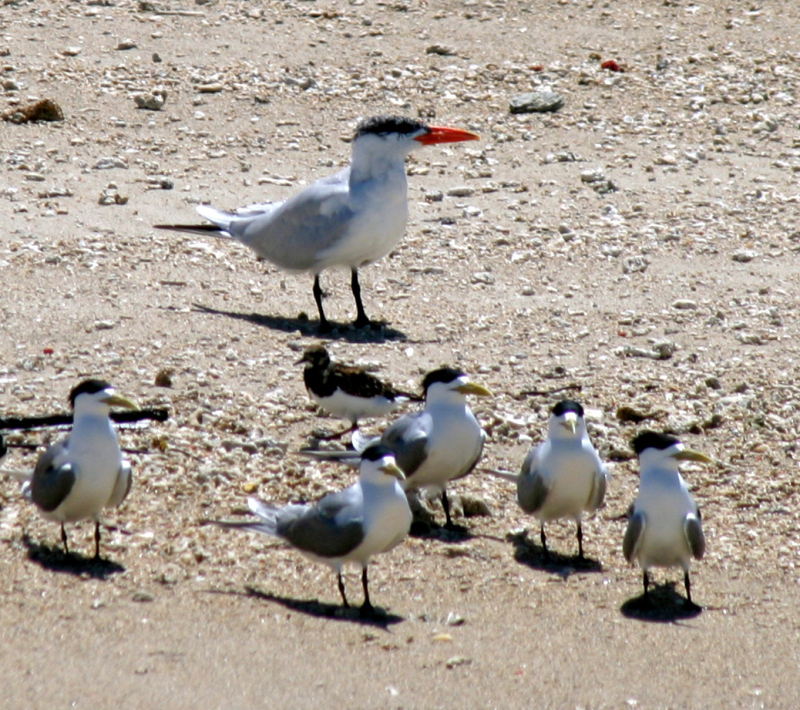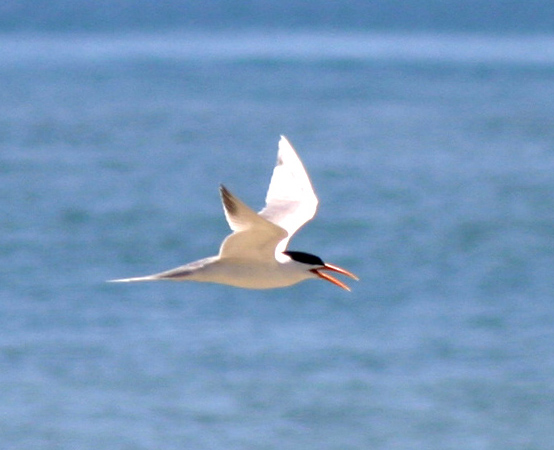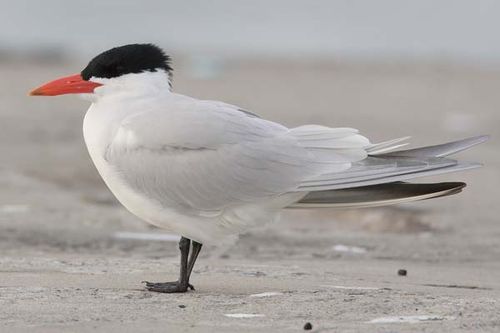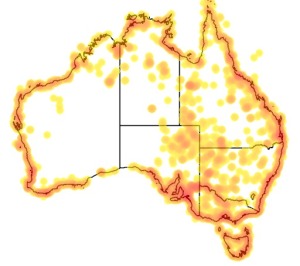
©Charlie: Caspian Tern (with red beak) along Kimberley Coast - notice how much larger it is than the Crested Tern that are with it
Colours
Distinguishing features
Adult birds have black legs, and a long thick red-orange bill with a small black tip. They have a white head with a black cap and white neck, belly and tail. The upper wings and back are pale grey; the underwings are pale with dark primary feathers. In flight, the tail is less forked than other terns and wing tips black on the underside. In winter, the black cap is still present (unlike many other terns), but with some white streaking on the forehead. (Wikipedia)
Size
- From 48 cm to 60 cm (Length of specimen)
Weight
- From 0.53 kg to 0.78 kg
Wingspan
- From 127 cm to 145 cm
Synonyms
Distribution
Distribution and habitat preferences
Their breeding habitat is large lakes and ocean coasts in North America (including the Great Lakes), and locally in Europe (mainly around the Baltic Sea and Black Sea), Asia, Africa, and Australasia (Australia and New Zealand). North American birds migrate to southern coasts, the West Indies and northernmost South America. European and Asian birds spend the non-breeding season in the Old World tropics. African and Australasian birds are resident or disperse over short distances. (Wikipedia)
Local abundance
- Cape Kidnappers, New Zealand: uncommon
Diet
They feed mainly on fish, which they dive for, hovering high over the water and then plunging. They also occasionally eat large insects, the young and eggs of other birds and rodents. They may fly up to 60 km from the breeding colony to catch fish; it often fishes on freshwater lakes as well as at sea. (Wikipedia)
Web resources
References
- Simpson, K., N. Day and P. Trusler (2004). Field Guide to Birds of Australia: 7th Edition Penguin Group (Australia), Camberwell, Victoria.
- Smith, G.C. (1987). The birds of Eagle Island, a tropical sand cay on the northern Great Barrier Reef, Australia, The Sunbird, 17(1): 1-11. LIRS catalog number 245.


